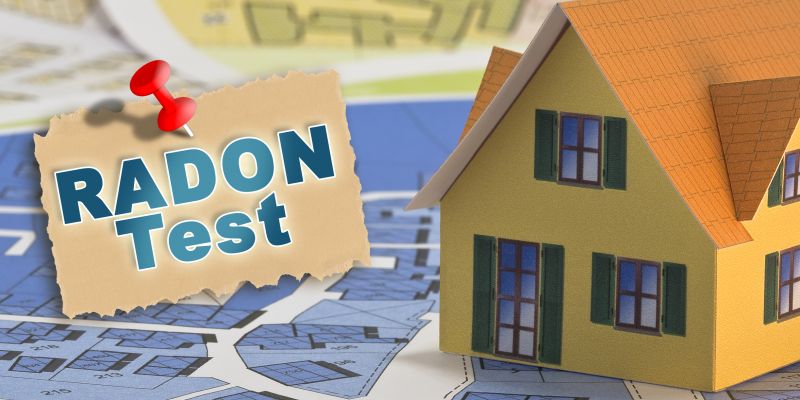Leading Radon Mitigation Equipment for Effective Air Purification
Choose from the best radon mitigation products that ensure thorough radon reduction and indoor air safety.
 Radon mitigation products are essential tools for reducing radon gas levels in residential and commercial buildings. Radon, a colorless and odorless radioactive gas, can accumulate indoors from soil, rock, and water sources, posing potential health risks over time. Implementing effective mitigation solutions can help improve indoor air quality and create safer living environments. These products range from simple venting systems to complex fan setups designed to draw radon out from beneath structures and vent it safely outside.
Radon mitigation products are essential tools for reducing radon gas levels in residential and commercial buildings. Radon, a colorless and odorless radioactive gas, can accumulate indoors from soil, rock, and water sources, posing potential health risks over time. Implementing effective mitigation solutions can help improve indoor air quality and create safer living environments. These products range from simple venting systems to complex fan setups designed to draw radon out from beneath structures and vent it safely outside.
Types of Products For Radon Mitigations
Sub-Slab Depressurization Fans
These fans are installed beneath the slab or foundation to actively draw radon from below and vent it outside, often used in basement or slab-on-grade homes.
Sealed Vent Pipes
Rigid or flexible pipes that connect the radon collection point to the exterior venting system, ensuring safe exhaust of radon gases.
Radon Barriers and Sealants
Materials designed to seal cracks and openings in floors and walls to prevent radon infiltration into indoor spaces.
Air Purification Units
Advanced filtration systems that reduce radon levels by filtering indoor air, often used as supplementary mitigation.
Ventilation Fans
High-capacity fans used to increase airflow and reduce radon accumulation in enclosed spaces.
Manifold and Ducting Systems
Components that distribute radon from multiple collection points to a single venting outlet, suitable for complex foundation layouts.
Radon Monitors and Detectors
Devices for measuring radon levels before and after mitigation to ensure system effectiveness.
Passive Venting Solutions
Simple vent pipes or passive stacks that rely on natural airflow to vent radon without mechanical assistance.
Foundation Seal Kits
Pre-packaged kits for sealing cracks, joints, and openings in foundations to minimize radon entry points.
Radon Mitigation Fans with Noise Reduction
Fans designed to operate quietly while effectively venting radon gases from beneath structures.
Popular Choices
Widely used in residential radon mitigation, these fans are effective at reducing indoor radon levels when properly installed.
Complete vent pipe assemblies designed for easy installation and effective radon venting.
Popular for ongoing radon level assessment, these devices help verify mitigation effectiveness.
Affordable solutions for sealing foundation cracks and entry points to prevent radon infiltration.
Effective at increasing airflow and reducing radon concentrations, especially in larger or more complex structures.
Simple, maintenance-free solutions that rely on natural airflow to vent radon gases outside.
All-in-one kits that include necessary components for DIY radon reduction projects.
Supplementary devices to improve indoor air quality by filtering radon particulates.
Flexible options for complex foundation layouts requiring multiple radon collection points.
Fans designed to operate with minimal noise, suitable for living areas.
Choosing the right radon mitigation products depends on various factors including building type, foundation design, and radon levels. Proper installation and maintenance are crucial to ensure these systems function effectively. While some solutions are suitable for DIY installation, others may require professional assistance to optimize performance and safety. It is important to assess the specific needs of a property and consult relevant guidelines or experts when selecting mitigation equipment.
Radon mitigation is a proactive approach to indoor air safety. The products available today are designed to adapt to different building configurations, whether it’s a basement, crawl space, or slab-on-grade foundation. Many systems incorporate durable materials and quiet operation features to minimize disruption. Regular testing of radon levels post-installation is recommended to verify system effectiveness and ensure ongoing safety. Properly maintained mitigation systems can significantly reduce radon concentrations, contributing to healthier indoor environments over time.
Key Buying Considerations
- Assess the radon levels in your property through testing before choosing a mitigation system.
- Determine the foundation type and layout to select compatible products and installation methods.
- Consider whether a DIY solution is feasible or if professional installation is recommended.
- Evaluate the noise level of ventilation fans to ensure they do not disrupt daily activities.
- Check the durability and material quality of vent pipes and seals for long-term effectiveness.
- Ensure the system is appropriately sized to handle the radon levels and square footage of the space.
- Look for systems with easy access for maintenance and filter replacement if applicable.
- Verify that venting components extend sufficiently outside the building to prevent radon re-entry.
- Understand local building codes and regulations related to radon mitigation systems.
- Consider supplementary air cleaning devices if indoor radon levels remain high after mitigation.
- Review product warranties and support options for ongoing system reliability.
- Evaluate installation costs and whether professional assistance is necessary.
- Check for compatibility with existing HVAC systems if integration is desired.
- Prioritize products with proven safety features and compliance with standards.
- Plan for regular testing post-installation to monitor radon levels and system performance.
